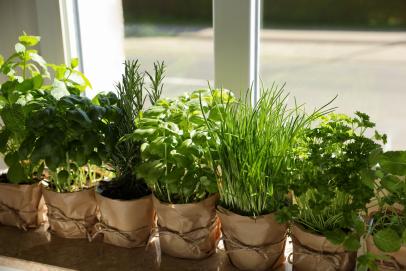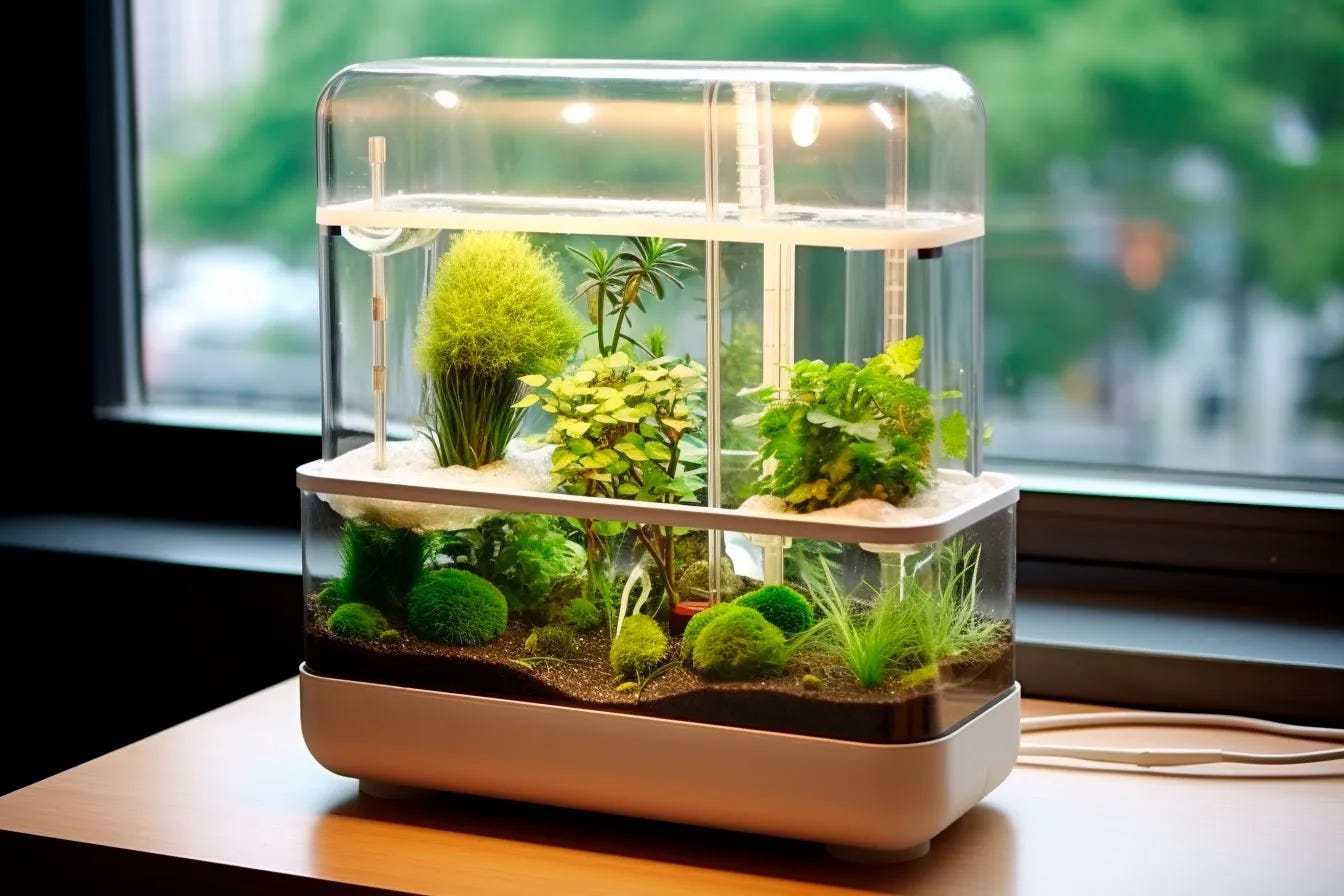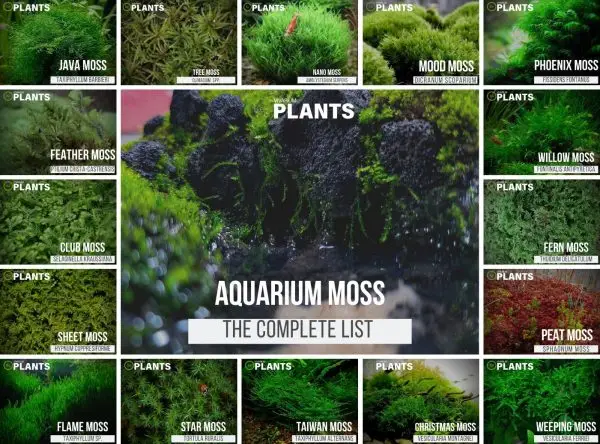Garden moss can grow in aquariums with proper care and water conditions. Ensuring adequate light and maintaining water quality are key for its survival.
Aquarium enthusiasts often seek to enhance their aquatic environments with natural elements, and garden moss frequently emerges as a favorable option. This versatile plant thrives in moist habitats, which makes it compatible with aquarium life when the right conditions are in place.
Will Garden Moss Grow in Aquarium: Moss in aquariums has multiple benefits including providing shelter for fish and aiding in water filtration by absorbing nutrients. It contributes to a balanced ecosystem within the tank, but it’s essential to monitor growth. Unchecked, moss can overtake the space, potentially disrupting the tank’s harmony. Adapting garden moss to an underwater setting calls for patience and attentive care, allowing hobbyists to cultivate a visually appealing and healthy aquatic garden.
:max_bytes(150000):strip_icc()/mld105281_0110_jar_terrarium_vert-494e4ab4ec1f4a258a68ea0f0346b4cc.jpg)
Credit: www.marthastewart.com
Table of Contents
The Mystery Of Moss In Aquaria
Exploring the world of aquascaping reveals the enchanting layers of underwater forests. Here, the presence of moss adds a touch of magic. This remarkable plant, often seen carpeting garden stones, has a mysterious life under water. How does garden moss fare in the watery realm of your aquarium? Let’s dive into the tale of moss and its journey from garden to aquaria.
Garden Moss Vs. Aquatic Moss
Garden moss thrives in damp, shady environments. Its lush green mats feel spongy to touch. In contrast, aquatic moss is born for the water. It withstands submerged conditions with ease. Both moss types offer beauty but their needs differ greatly. Let’s compare:
- Garden Moss: Loves soil, forest floors, rocks
- Aquatic Moss: Prefers water, often attaching to driftwood or rocks
Can garden moss adapt to life submerged? Success varies. It may survive for a time but often struggles, and eventually perishes.
The ideal choice for aquariums remains true aquatic moss. It’s well-equipped for underwater living. It also provides a haven for tiny aquatic creatures.
Aquarium Conditions For Moss Growth
To grow moss in an aquarium, create the perfect underwater world. Start with these essentials:
| Condition | Requirement |
|---|---|
| Lighting | Moderate, diffused light suits moss best |
| Water Quality | Clean, slightly acidic to neutral pH is ideal |
| Nutrients | Fertilizers can boost growth, but in low amounts |
| Temperature | Cool to warm temps are perfect for different moss species |
| Substrate | Not necessary, but moss can grow on gravel or even driftwood |
Moss is low-maintenance but still needs care. Pay attention to your tank’s condition. Keep the water clean and circulation constant. This ensures your aquatic moss thrives.
Remember, the right conditions lead to lush, green aquascapes. Mosses from both land and water can stun with their simple elegance.
Selecting Suitable Moss For Your Aquarium
Welcome to the enchanting world beneath the water’s surface! Introducing moss into your aquarium isn’t just about aesthetic appeal. It’s also about choosing the right type. Let’s dive into how to select the perfect moss for your underwater haven.
Characteristics Of Aquatic-friendly Moss
Aquatic-friendly moss thrives underwater. It should possess certain features to flourish in this unique environment. Take note of these characteristics when choosing moss:
- Low light requirements — Ideal moss doesn’t need intense lighting.
- Suitable pH tolerance — It must endure the pH levels in your tank.
- Submersion resilience — The moss should grow well fully submerged.
- Minimal care needs — Look for types that demand little upkeep.
Top Picks For Aquarium Moss
Selecting the best moss for your aquarium is crucial. Each type brings a unique texture and growth pattern to your tank. Below are the top choices:
| Type of Moss | Growth Rate | Care Level |
|---|---|---|
| Java Moss | Medium | Easy |
| Christmas Moss | Slow to Medium | Moderate |
| Flame Moss | Slow | Moderate |
| Weeping Moss | Medium | Moderate |
Each moss variety listed above can create a stunning aquascape. Remember to match moss to your tank’s conditions for best results!
Preparation Steps For Moss Introduction
Introducing garden moss into an aquarium turns a plain tank into an underwater forest. Proper preparation is crucial. It ensures the moss thrives and does not harm aquatic life. Follow these steps to start your underwater greenery journey.
Cleaning And Quarantining Moss
To avoid unwanted guests in your tank, clean and quarantine your moss.
- Rinse the moss in dechlorinated water to remove dirt.
- Soak it in a mild bleach solution for a few minutes.
- Rinse thoroughly to remove any bleach residue.
- Place the moss in a separate container with tank water.
- Monitor the moss for a week for signs of pests or disease.
Creating The Perfect Moss Attachment
Moss needs help to attach to surfaces in your aquarium. Use these steps to create a solid bond:
- Choose decor pieces like rocks or driftwood as attachment bases.
- Wrap the moss gently around your chosen base.
- Use fishing line or cotton thread to secure the moss.
- Avoid glue unless it’s aquarium-safe.
- Place your decorated piece in the tank.
- Over time, the moss will naturally attach to the surface.
Creating A Moss-friendly Environment
Creating a Moss-Friendly Environment is essential if you wish to grow garden moss in your aquarium. Mosses can transform an ordinary tank into a lush underwater garden. To thrive, they need the right conditions. The following guidelines help set the stage for a moss haven.
Water Parameters
Maintaining ideal water parameters is critical for moss health. Start with these steps:
- Keep pH levels between 5.5 and 7.5; neutral is best.
- Ensure water temperature stays within 70 to 75°F. Use a heater if necessary.
- Monitor water hardness; aim for soft to slightly hard.
- Perform regular water changes to reduce pollutants.
Lighting Requirements
Proper lighting helps moss photosynthesize and flourish:
- Use LED lights for energy efficiency and control.
- Aim for moderate lighting—too much can promote algae.
- Set a consistent light schedule, around 10-12 hours daily.
Substrate And Fertilization
Substrate and nutrients support moss growth:
| Substrate | Fertilization |
|---|---|
| Use fine gravel or aquarium soil for anchoring. | Apply liquid fertilizers sparingly. Moss is low-maintenance. |
| Ensure the substrate layer is at least 1-2 inches deep. | Avoid over-fertilizing to prevent algae growth. |
Focus on these guidelines to enjoy a verdant, moss-filled aquarium that captivates and soothes.
Planting Techniques For Optimal Growth
Are you hoping to see lush, green moss thriving in your aquarium? Choosing the right planting technique is crucial. It affects how the moss will grow. Moss can beautify your aquarium and offer a natural feel. Let’s explore methods to plant garden moss for the best growth underwater.
The Driftwood Method
Driftwood serves as a natural canvas for moss. It mimics moss’s native environment. First, select a piece of driftwood. Make sure it’s suitable for your tank size. Clean it properly. Attach your moss with thin fishing line or cotton thread. Over time, the moss will grip the wood firmly. This method gives a breathtaking, forest-like vibe to your tank.
Moss Mats And Tiles
Moss mats and tiles are perfect for beginners. They are ready-to-place in the aquarium. Lay the mat flat or attach it to a surface. The mat contains live moss. It can stick to the substrate or decorations. You can cut these mats to fit any area. This easy approach helps create a lush carpet of moss effortlessly.
Free-growing Versus Anchored
Free-growing moss floats freely in the tank. It offers a dynamic look. Simply place the moss in the water. Let it drift. Anchored moss, on the other hand, attaches to objects. Use non-toxic super glue or a mesh anchor. Secure your moss to rocks, driftwood, or backdrops. Anchoring helps shape your aquascape and keeps the moss in place.
Each technique has its own charm. Try them out. See which works best for your aquarium setup. Remember, patience is key. Soon, your aquarium will boast a vibrant, mossy landscape.
Advanced Care Tips For Moss Maintenance
Thriving aquatic moss in an aquarium not only creates a stunning natural backdrop but also serves as a habitat for fish and microorganisms. Advanced care is paramount for maintaining the vigor and aesthetic appeal of moss. The following advanced care tips for moss maintenance will help you keep your aquatic garden pristine and promote healthy growth.
Pruning And Propagation
Aquarium mosses require regular trimming to stay healthy and manage growth patterns. Pruning provides light penetration and water flow, ensuring lower layers receive vital nutrients. Proper pruning techniques include:
- Using sharp scissors to avoid tearing.
- Making clean cuts to encourage even growth.
Propagation of moss is simple. Trimmed sections can swiftly regenerate into new growth. Here’s a structured approach:
- Snip a section of the moss mat.
- Attach it to a new surface, such as rock or wood.
- Watch it anchor and expand over time.
Dealing With Algae And Pests
Algae and pests pose significant threats to aquarium moss health. Consistent care and attention can mitigate these issues. Here are tactics to maintain a clean moss environment:
| Action | Benefit |
|---|---|
| Maintain water quality | Prevents algae growth |
| Limit light exposure | Reduces algae’s energy source |
| Introduce algae eaters | Natural algae control |
For pests, regular observations help early detection. Quarantine new plants to prevent infestations. Gentle manual removal or dips in safe solutions can manage pests.
Integrating Moss Into Your Aquascape
Are you ready to dive into the world of aquascaping with a natural, vibrant touch? Garden moss can transform your aquarium from simple to spectacular. It’s more than greenery; it’s a creative canvas in your underwater world.
Designing With Moss
Let’s start with the basics. Moss adds a lush backdrop to any aquascape. When planning your design:
- Choose the right type of moss for your tank conditions.
- Consider attaching it to rocks or driftwood.
- Use fishing line or moss-specific glue for secure placement.
Creating Depth And Contrast
Moss isn’t just a flat feature. It brings dimension to your aquascape. To create depth:
- Plant thicker moss in the background.
- Use finer, sparser mosses upfront.
Contrasting moss with hardscapes, like rocks or wood, enhances the complexity of your tank.
Moss As A Focal Point
Think of moss as the star of your underwater show. A well-placed moss formation can be the main attraction. Consider:
- A moss tree – Create using branches and various moss textures.
- Moss walls – Give the illusion of an underwater forest.
- Shape moss into distinct formations for natural artistry.

Credit: www.hgtv.com
Common Challenges And Solutions
Trying to grow garden moss in an aquarium can be tricky. Many aquarium enthusiasts appreciate the lush carpet of green it can provide. Yet, moss from your garden may face some hurdles under water. To help your moss thrive, let’s tackle some common issues and offer effective solutions.
Browning Moss Concerns
If your moss starts turning brown, don’t panic. It’s a common issue for new aquatic gardeners. The key reasons are often:
- Lack of light: Moss needs light to stay green.
- Unclean water: Debris could stress your moss.
Solutions include:
- Adjust the lighting: Provide 10-12 hours of light daily.
- Clean regularly: Remove debris to prevent decay.
Water Chemistry Fluctuations
Moss is sensitive to changes in water pH and hardness. Such fluctuations can hinder growth. Keep an eye on your water’s:
| pH level | Hardness |
|---|---|
| 5.5-7.5 (ideal for moss) | Soft to moderately hard |
Balancing these levels includes:
- Testing water: Use a testing kit weekly.
- Making changes: Use conditioners if needed.
Moss Competing With Other Plants
Moss may struggle if other plants take its food and light. To give moss a fair chance:
- Space plants out: Ensure each has room to grow.
- Manage nutrients: Feed your aquarium wisely.
This careful arrangement leads to a healthy tank where your moss can flourish alongside its plant neighbors.

Credit: thisishorticulture.substack.com
Frequently Asked Questions For Will Garden Moss Grow In Aquarium
Can Garden Moss Thrive In An Aquarium?
Garden moss can adapt to underwater life in an aquarium if conditions mimic its natural habitat. Adequate lighting, moisture, and a stable temperature are crucial for its growth. However, not all garden moss species are suitable for aquatic environments.
What Types Of Moss Are Best For Aquariums?
Aquarium-friendly moss varieties such as Java moss and Christmas moss are ideal as they naturally grow in or around water. These species cling to rocks and driftwood, aiding in tank stabilization and providing a habitat for fish.
How Do You Prepare Garden Moss For An Aquarium?
To prepare garden moss for an aquarium, clean it thoroughly to remove debris and pests. Quarantine the moss to observe for any changes. Gradual acclimation to the water conditions is essential for a successful transition.
Will Moss Affect Water Quality In My Aquarium?
Moss can positively affect water quality by absorbing nitrates and providing oxygenation. However, proper maintenance is required to prevent detritus buildup which can degrade water quality over time.
Conclusion
Bringing the outdoors inside, garden moss can indeed thrive in an aquarium with careful attention and suitable conditions. It adds natural beauty and supports a balanced ecosystem. For those ready to embark on this watery gardening adventure, patience and research pave the way to success.
Embrace the challenge and watch your underwater landscape flourish with the serene touch of garden moss.
(To learn about Bonsai for Aquarium Enthusiasts: https://bonsainurserybd.com/bonsai-for-aquarium/)
